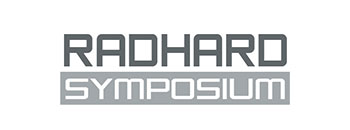Abstract
Small Satellite Research Network (SSRN)
Ingo Gulyas1
1 University of Applied Sciences Wiener Neustadt, 2700 Wiener Neustadt, Austria
Abstract
The development and validation of CubeSats, presents an interdisciplinary challenge demanding for a broad spectrum of expertise and experience, including mechanics, electronics, physics and effects of radiation, which can only be addressed due to efficient networking. For this purpose, the FTI-partnership ‘Small Satellite Research Network’ (SSRN) was founded by the University of Applied Sciences Wiener Neustadt (UAS WN), Forschungs- und Technologietransfer GmbH (FOTEC), Seibersdorf Laboratories and R-Space GmbH. Within SSRN, the national expertise in space technology with respect to small satellites is collected to establish a comprehensive database in order to build a dedicated network of key players. This initiative intends to prepare Austria’s industry, research, and academic sectors for the future challenges and opportunities in the field of nano satellites. Based on the established network, an ESA-Lab proposal was submitted, accepted and implemented at the end of 2024.The ESA-Lab@UAS WN & FOTEC aims to establish a network for initiating new research proposals and projects in small satellite development. This includes design, manufacturing, testing, launch readiness, and mission operation and therefore extends SSRN activities to an international context. Recently, a steering board has been established to obtain input from key players in industry and academia. Irradiation tests of small satellite key components at Seibersdorf Laboratories and MedAustron are under preparation, as well as the organization of the SSRN workshop in June 2025. Based on results of previous irradiation tests, SSRN intends to develop a modular test setup capable of monitoring the performance of a wide range of potential devices during irradiation test campaigns. Associated activities include the preparation of beam irradiation tests of a novel FPGA system in 7 nm technology. Related devices have a high potential to address upcoming trends like machine learning and neural networks for future small satellite missions [1].
References
[1] A. Cratere, L. Gagliardi, G. A. Sanca, F. Golmar and F. Dell’Olio, "On-Board Computer for CubeSats: State-of-the-Art and Future Trends," in IEEE Access, vol. 12, pp. 99537-99569, 2024, doi: 10.1109/ACCESS.2024.3428388.


